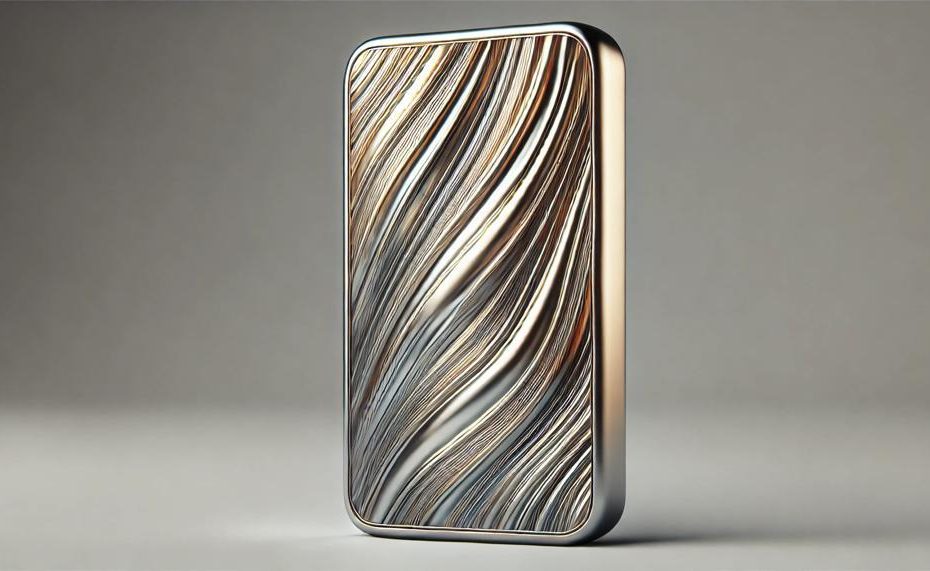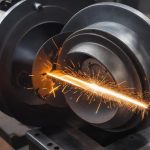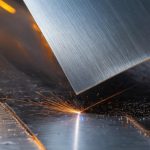If you’ve ever faced the challenge of unwanted magnetic fields affecting your welding process, you’re not alone. It’s a common yet often overlooked issue that can significantly impact the quality and efficiency of your welds.
In this post, we’re going to explore the ins and outs of why metals become magnetized, how this magnetism can disrupt your welding work, and most importantly, the effective methods to demagnetize metal. Our aim is to arm you with knowledge and practical solutions, ensuring your welding projects are as seamless as possible.
Here’s a snapshot of what we’ll cover:
- Understanding Magnetism in Metals: Unraveling the science behind why and how metals become magnetized.
- Challenges in Welding Magnetized Metal: Discussing the specific ways magnetism can interfere with welding processes.
- Demagnetization Techniques: A comprehensive guide to various methods you can use to demagnetize metal, from simple at-home techniques to more advanced industrial solutions.
- Best Practices and Safety Considerations: Tips to ensure effective demagnetization while maintaining safety standards.
Whether you’re a professional welder or a DIY enthusiast, this guide will provide you with valuable insights and techniques to tackle the challenges of magnetized metal in welding. So, let’s dive in and demagnetize the mysteries of welding together.
Contents
Facts About Magnetization
Demagnetizing metal before welding is a crucial step to ensure the integrity and quality of the weld. Here’s a concise look at the common methods used for demagnetizing metal for welding:
| Method | Description | Best For |
| Heating | Heating the metal above its Curie temperature, causing it to lose magnetic properties. | Metal types that can withstand high temperatures without altering their properties. |
| Demagnetizing Coil/Degaussing Coil | Passing the metal through a coil that generates an alternating magnetic field to neutralize magnetization. | Smaller, manageable pieces of metal where uniform demagnetization is required. |
| Striking with a Hammer | Mechanical stress via hammering disrupts the magnetic domains, reducing magnetism. | Rugged, durable metals not sensitive to physical stress. |
| Electric Current | Passing a direct or alternating electric current through the metal to counteract the magnetic field. | Metals where precise control over demagnetization is necessary. |
| Mechanical Stress (other than hammering) | Applying mechanical stress through bending or twisting to realign magnetic domains randomly. | Metal parts that can endure deformation without compromising use or integrity. |
| Degaussing Machine | Using a specialized machine to expose the metal to a powerful, alternating magnetic field, effectively demagnetizing it. | Larger, bulkier items or situations where other methods are ineffective or impractical. |
Choosing the right method depends on several factors including the type of metal, size and shape of the piece, and the degree of magnetization.
Safety features of degaussers and potential risks like damage to sensitive equipment or incomplete demagnetization should be carefully considered.
When Do You Need to Demagnetize Metals
When diving into the world of welding, it’s paramount to grasp when and why you need to demagnetize metals. This step isn’t just a whimsy; it’s the backbone of ensuring top-tier weld quality.
Let’s unravel the common scenarios in welding that necessitate the demagnetization of metals, shall we?
| Situation | Reason for Demagnetization | Common Metals Involved |
| Welding of large or thick pieces | Prevents arc blow and distortion, ensuring even weld penetration | Steel, Iron |
| Welding near existing magnetic fields | Avoids interference with the welding arc, which can lead to poor weld quality | Steel, Iron, and alloys thereof |
| Welding after heat treatment | Removes residual magnetism to prevent arc blow and facilitate smoother welding operations | Ferromagnetic materials such as steel and iron |
In essence, demagnetizing metals before you strike an arc isn’t just busywork; it’s a crafty move. Whether you’re dealing with the hefty bulk of large or thick metal pieces, working in the vicinity of pesky magnetic fields, or picking up the pieces post-heat treatment, demagnetization ensures your weld isn’t just good—it’s gold-standard. Steel and iron are often the stars of this show, but let’s not forget their various alloys that also join the party.
Key Facts About Demagnetization
To demagnetize metal for welding, several effective methods are employed, each tailored to tackle the magnetism that can interfere with the welding process.
These methods ensure safety, enhance weld quality, and facilitate easier handling of metals. Below is an exploration of these common techniques:
| Method | Description | Application |
| Heating | Heating the metal above its Curie temperature, where it loses its magnetic properties. | Particularly useful for 304 stainless steel and similar alloys. |
| Demagnetizing Coil or Degaussing Coil | Passing the metal through a coil emitting an alternating magnetic field to neutralize magnetism. | Suitable for various metal shapes and sizes, including pipes. |
| Striking with a Hammer | Applying mechanical stress through hammering to disrupt the magnetic domains. | Effective for small areas or items where precision is not critical. |
| Applying Electric Current | Using direct or alternating current to realign magnetic domains oppositely or randomly. | Ideal for metals in complex configurations or those too large for coils. |
| Permanent Magnet/Electromagnetic Degausser | Using a powerful magnet or electromagnetic field to counteract existing magnetism. | Best for targeted demagnetization and for metals with stubborn magnetic fields. |
These methods not only mitigate the risk of weld spatter and porosity but also contribute significantly to productivity by improving weld strength and overall quality.
Whether you’re dealing with pipes that need degaussing, stainless steel requiring heating, or intricate pieces that demand precise demagnetization, selecting the right method is paramount.
How to Detect Magnetism in Metals?
Detecting magnetism in metals before welding is akin to finding an unseen force that can throw a spanner in the works of a smooth weld. Let’s get straight into how you can suss out if that stubborn metal piece is playing the magnet game on you.
Quick and Dirty Ways to Spot a Magnetized Metal
Magnetic Field Detector Magic
These nifty gadgets can sniff out magnetic fields like a hound on a trail. Simply hover it over your metal. If it beeps or its needle dances, you’ve got a magnetized piece.
Gaussmeter Gaze
This device doesn’t just spot a magnetic field; it tells you how strong it is. A reading above zero? Your metal’s got magnetic mojo and needs a demagnetizing session.
Visual Voodoo
Sometimes, you don’t need fancy gadgets. Sparks flying? Metal shavings clinging like bees to honey? That metal’s magnetized, no doubt about it.
Magnet Test
Old-school but gold. Drag a magnet over your metal. If it clings, it’s time to sing the demagnetizing blues.
For the Hard-to-Detect Cases
| Eddy Current Tester | Uses electromagnetic induction to detect sneaky, low-level magnetism in metals that play hard to get. |
| Consider the Metal’s History | If it’s been cozying up to magnetic materials or has seen temperatures hotter than a summer in Sahara, chances are it’s magnetized. |
| Welding Woes | Remember, welding can turn non-magnetized metal into a magnet itself, especially with high amperage or DC machines. |
So there you have it, mate. Whether you’re wielding a high-tech gadget or relying on good ol’ visual cues, detecting magnetism in metals before welding ain’t rocket science but sure as heck important.
How Can You Demagnetize Metals?
To tackle the task of demagnetizing metals for welding, several methods stand out due to their efficacy and commonality in the welding world. Each technique has its own merits, tailored to different scenarios and types of metals. Below is a breakdown of the most prevalent methods used to demagnetize metals in preparation for welding:
| Method | Description | Common Use Cases |
| Heating | Applying heat to a metal until it reaches its Curie temperature, at which point its magnetic properties are lost. | Ideal for small parts or components that can be evenly heated without damaging their structure. |
| Demagnetizing Coil | Surrounding the metal with a coil through which an alternating current is passed, neutralizing the metal’s magnetic field. | Suitable for tools and parts of various sizes, especially when precise control over demagnetization is needed. |
| Striking with a Hammer | Using mechanical stress by hammering the metal, disrupting its magnetic domains. | Mostly employed for quick, on-site fixes when other methods aren’t available. |
| Applying an Electric Current | Direct application of an electric current in a single direction or alternating, to reduce or eliminate magnetism. | Effective for pipes and larger structural elements requiring thorough demagnetization. |
| Mechanical Stress | Bending or twisting the metal, which can help realign magnetic domains. | Applied in situations where heat treatment is not viable or practical. |
| Degaussing Coil (AC) | A coil that produces an alternating magnetic field is used to progressively reduce the metal’s magnetism. | Best for sensitive applications where residual magnetism must be minimized, such as in precision welding tasks. |
Demagnetizing metals before welding is not just a step; it’s a necessity that skirts around potential pitfalls like arc blow – a phenomenon that can lead to poor weld quality. Whether you’re dealing with intricate components or hefty beams, choosing the right method hinges on understanding the nature of the metal at hand and the demands of the welding project.
Remember, it’s not just about getting rid of magnetism; it’s about ensuring that your welds are clean, strong, and up to snuff. So, before you strike an arc, make sure your metal’s magnetism doesn’t throw a wrench into your works.

Useful Tips
Demagnetizing metal before welding is crucial for achieving high-quality welds and avoiding common issues like arc deflection and porosity. Here are some useful tips to effectively demagnetize metal:
| Method | Description | Considerations |
|---|---|---|
| Heat Treatment | Heating the metal above its Curie temperature to remove magnetism. | Ensure even heating and controlled cooling to avoid altering the metal’s properties. |
| Alternating Current (AC) Degaussing | Passing an AC through the metal using a degaussing coil. | Avoid excessive exposure to prevent overheating of the metal. |
| Mechanical Stress | Striking the metal with a hammer in various places. | Use with caution to prevent deformation or damage to the metal. |
| Electromagnetic Degaussing | Using a rotating demagnetizer that applies a strong, decreasing magnetic field. | Ensure comprehensive coverage for uniform demagnetization. |
| Eliminate External Magnetic Sources | Remove any external magnets or magnetic fields from the vicinity of the metal. | Check surroundings for hidden sources of magnetism. |
| Regular Testing | Using a gaussmeter or compass to check for residual magnetism. | Perform tests before and after demagnetization to ensure effectiveness. |
Key Points:
- Safety First: Always wear appropriate safety gear when handling and demagnetizing metals.
- Understand Your Metal: Different metals may require different demagnetization techniques. For instance, 304 stainless steel might be best demagnetized using heat treatment or electromagnetic fields.
- Equipment Care: Ensure your demagnetizing equipment is in good working condition to avoid incomplete demagnetization.
- Environment Matters: Be mindful of sensitive electronic equipment nearby that could be affected by demagnetization processes.
- Practice Makes Perfect: If you’re new to demagnetizing metals, practicing on scrap pieces can help you get a feel for the process without risking damage to valuable workpieces.
Demagnetizing metal requires a blend of knowledge, skill, and the right tools.
Conclusion
In conclusion, demagnetizing metal for welding is an essential yet often overlooked step that can dramatically enhance the quality and integrity of your welds.
By addressing the invisible yet impactful force of magnetism, welders can avoid common pitfalls such as arc blow, metallic debris attraction, and the dreaded residual magnetism that can compromise the strength and appearance of welds. This article has illuminated the science behind metal magnetization, the practical challenges it poses, and the various methods available for effective demagnetization.
From heating metals beyond their Curie temperature to employing advanced degaussing techniques, each method offers a solution tailored to the metal’s properties and the project’s requirements. Safety considerations and best practices ensure that the process is not only effective but also safe for the welder and the surrounding environment.
Armed with this knowledge, welders—whether professionals or DIY enthusiasts—can tackle the challenges of magnetized metal with confidence, ensuring their welding projects are not just completed but mastered.





